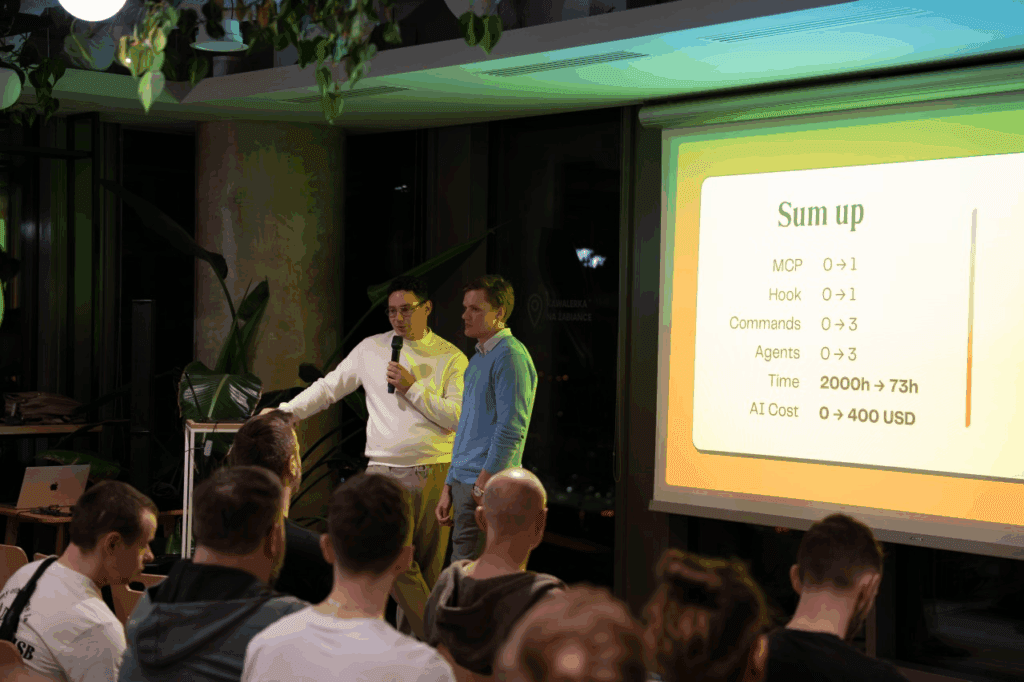How to Reach Investors and Raise Capital?
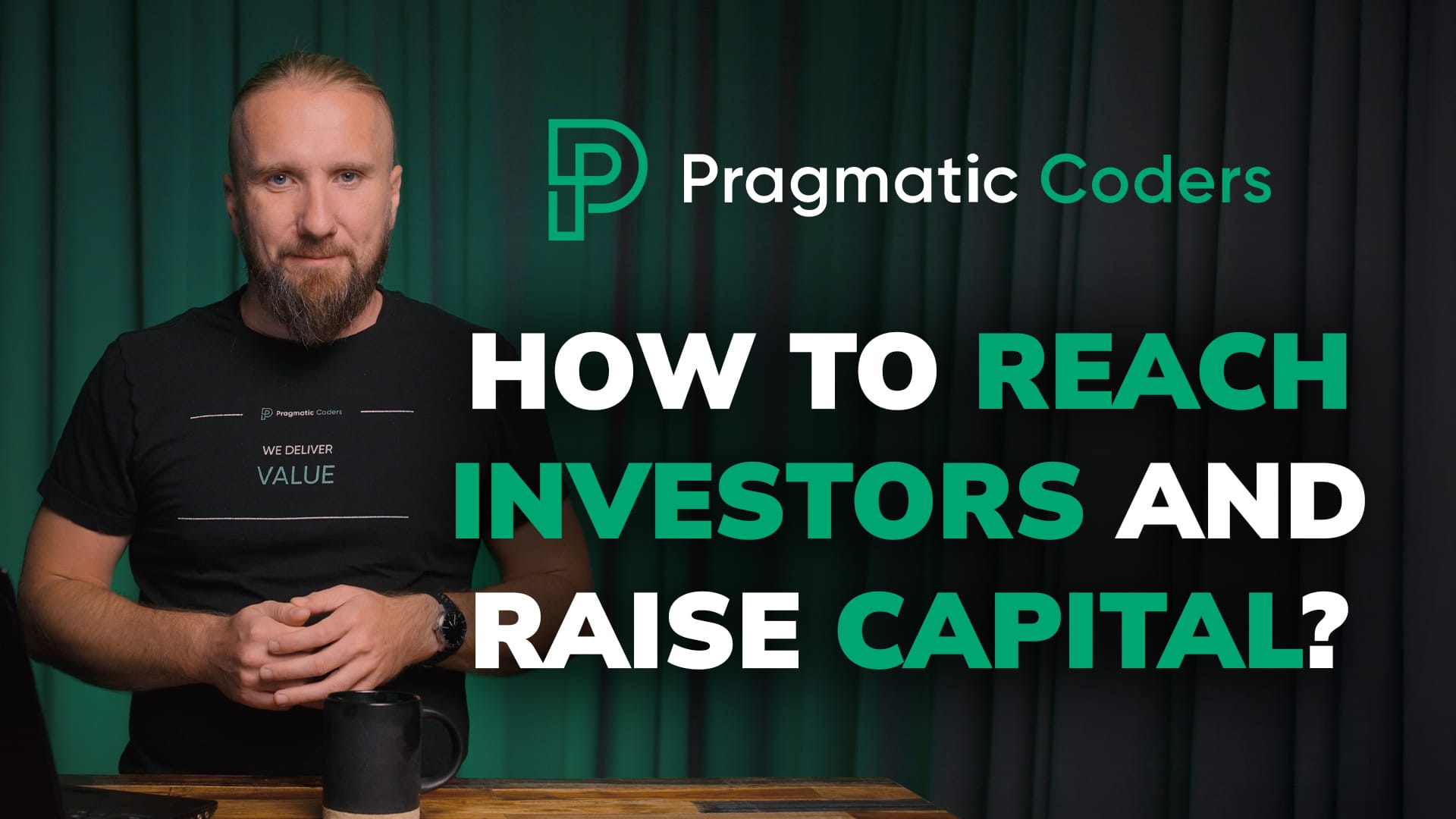
You’ll hear 99 no’s before one yes – and that’s normal.
In this article I’ll share the lessons I learned during a year-long fundraising process for my startup Health Folder (Teczka Pacjenta). I’ll talk about how to build investor relationships, make conferences count, and keep momentum until a yes finally comes.
This is another part of the series about startup financing. Previously, I explained where investors get the funds for their investments and why understanding this is so important when you are trying to raise capital. If you haven’t read that part yet, it’s worth starting there – the context will help you get the most out of today’s advice.
Lesson 1: Build Relationships
The biggest lesson from my fundraising journey is simple: build relationships – mainly with investors, but not only with them.
I used to think startup conferences were a waste of time. As a founder I believed it was smarter to spend time with customers or at investor-only events. Why mingle with other founders? Over time, I learned how wrong that was.
1.1 Networking – but with whom?
Conversations with other founders – even outside your niche – can open doors. Those who have already raised money know which investors are active, what they look for, and can often connect you to them. Sometimes they’ll introduce you to investors who passed on their startup but might like yours instead.
During fundraising every founder collects investor knowledge: which funds are investing now, in which sectors, and at what ticket sizes. A warm intro – ideally from an investor, but also from another founder or someone who knows a fund partner – is priceless.
In my own case, nearly every warm intro led to at least a short call. These conversations are also a chance to exchange feedback on products and pitches. Share your own experience, even failed attempts – someone’s comment might help you land the next meeting.
Discover how Health Folder revolutionizes medical documentation management with its AI-powered mobile app built using low code.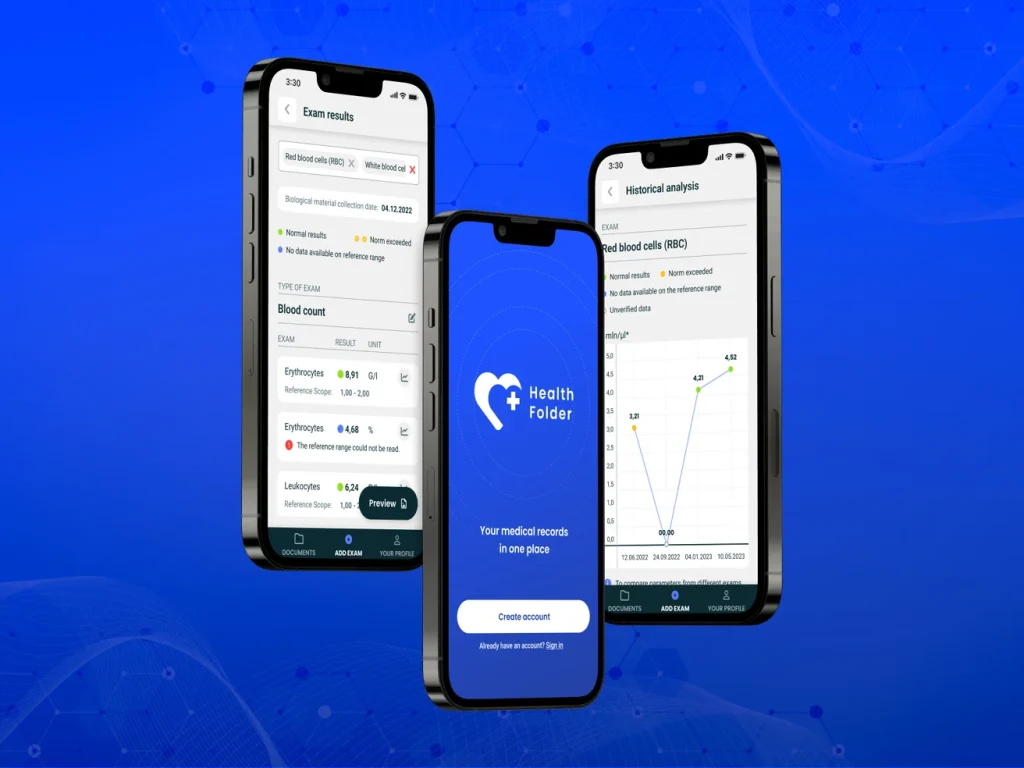
Health Folder: Your AI-based digital medical documentation folder
1.2 Choose the Right Conference
Startup conferences are worth it – especially the ones where both investors and startups are present and where you can schedule meetings ahead of time through an app or platform.
Typical meetings last 10–20 minutes, rarely enough to secure a commitment. After dozens of such chats a day, an investor may barely remember you. But if you return to the same event or city, those short meetings start to add up. Even a “no” isn’t final if you later show progress and remind them of your earlier talk.
Smaller, recurring events worked best for me – around 200–300 people with a few dozen investors. Big conferences are chaotic and it’s hard to meet the same person twice. At smaller ones you bump into familiar faces all day. Informal chats during coffee breaks or dinners often turn into group conversations and warm intros.
1.3 Remember Friends of Friends
Networking doesn’t stop at first-degree contacts. Someone you meet might know someone who knows the right investor. Keep relationships alive even if people aren’t founders or investors themselves.
It’s surprisingly easy to reach almost anyone with just a few introductions. If you need a fun reminder of how small the world is, watch Six Degrees of Separation with a very young Will Smith – it perfectly shows how these human webs work.
In short, your real goal in networking is to earn a warm intro to the investor who fits your startup best. So – get to work.
Lesson 2: Ask for Feedback, Not Money
The next lesson is about how you start the relationship. When you invite an investor to talk – whether for a conference meeting or a video call – don’t open with “we’re raising a round.”
An investor once told me:
Ask for feedback and you’ll get money; ask for money and you’ll only get feedback.
He explained that many VC partners have big egos and decades of experience. They enjoy sharing their views.
I followed that advice. Instead of pitching investment potential, I said we were considering funding but mainly wanted their thoughts on our product and market. Nearly every investor agreed to meet. Many circled back later, asking if we were ready for a round and whether they could join.
I highly recommend this approach – though after this article is public and more investors read it, it might not feel like such a secret anymore.
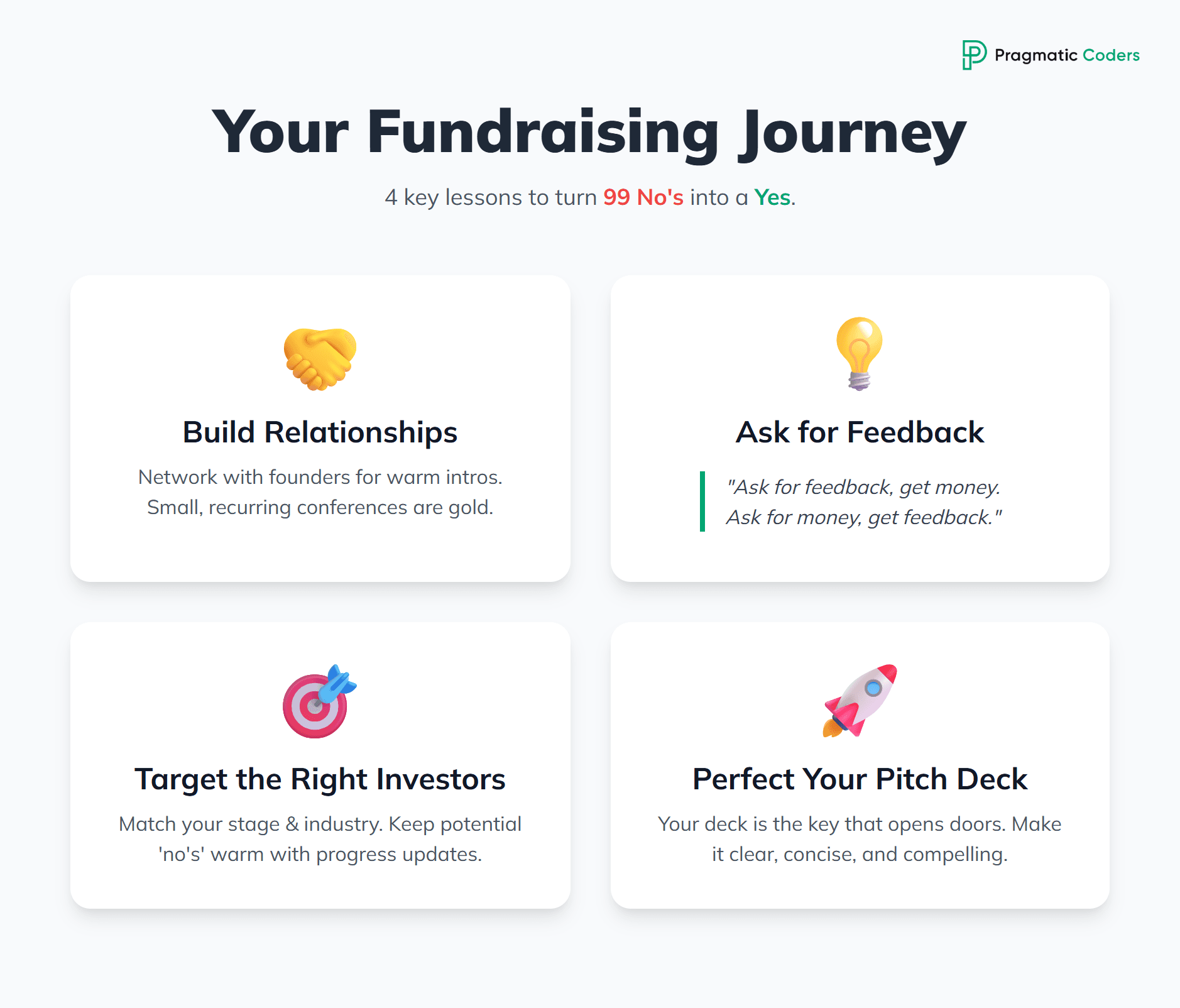
Lesson 3: How to Reach the Right Investors
Another key lesson is that you must reach the right investors. I’ve mentioned it before, but what does “right” really mean in practice?
3.1 Depending on the Stage
Start with your product stage.
If you only have an idea and no product, contacting late-stage VC funds is a waste of everyone’s time. Even if you already have a product but no product–market fit and no traction, big funds will likely pass.
That’s when business angels make sense. Later, when you’re raising a larger round, angels or small VC funds may not have the budgets you need. Know your stage first – and approach investors who match it.
3.2 Depending on What the Funds Invest In
Next, be sure the fund’s focus fits your startup.
When I was building a medical app, reaching out to funds investing only in deep tech or space technology made no sense. A few minutes of research into a fund’s portfolio and recent deals can save a lot of dead-end conversations.
Still, if someone offers to introduce you to an investor who isn’t an obvious fit, you can accept – just be upfront that you’re looking for product feedback rather than funding. Even a space-tech investor can give insights you might not expect.
3.3 Ask for an Intro in Every Conversation
Every time I spoke with someone – whether it was an investor, another founder, or simply a curious contact – I asked if they knew someone else I should talk to.
Almost half the time, that simple question led to a warm intro. If I noticed a friend interacting with an investor on LinkedIn, I’d message: “Hey, do you know this person? Could you intro me?” No one ever refused. A warm intro almost always turned into a real meeting.
3.4 Maintain Relationships, Even If They Say No
You will hear no many times – around ninety-nine times – before you hear a yes. That’s normal.
But a no isn’t the end. I sent updates every three to four weeks to investors who had potential but weren’t ready. I shared key wins, growth metrics, and sometimes publicly thanked specific investors for advice (with their permission). Occasionally I’d add a request like, “If you know someone in the pharmaceutical industry, an intro would help a lot.”
These updates often brought unexpected replies. Investors with no stake in my success sometimes sent useful contacts. A few who had said no reached out months later with, “This looks interesting now – let’s revisit the conversation.”
The foundation, of course, is real progress. If growth stalls, reassess. But if you’re moving forward, keep showing it.
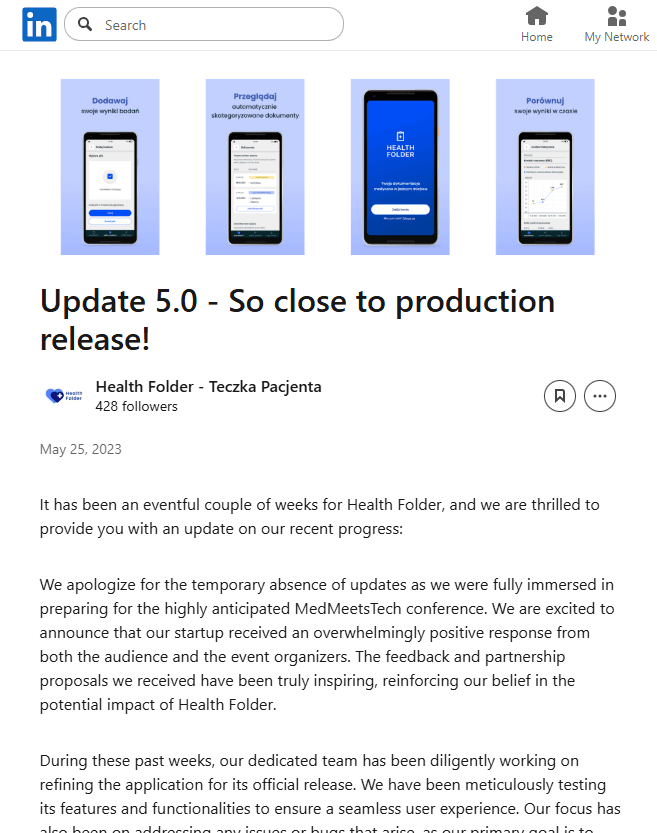
Lesson 4: The Pitch Deck Is Essential
Finally, never underestimate the power of your pitch deck. It might sound obvious, but I’ve seen many founders overlook it.
Your deck – usually a PDF – is the first thing investors read. They open it even after a warm intro, and it often decides whether they take the meeting. It’s your main door-opener.
Yet very few decks truly work. Crafting one that does is a big enough subject for its own article, which I’ll cover next. For now, remember: a clear, concise, well-designed deck can mean the difference between an ignored email and a call that leads to funding.
Already have funds and want to build a product? Let us know.







